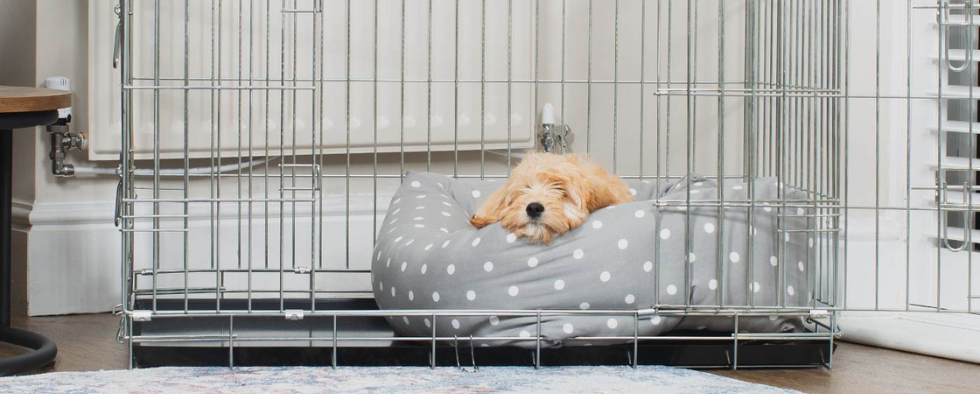Training a puppy can be difficult and overwhelming, especially in an age where the internet is shouting conflicting directions at you from all sides.
Convincing a dog that they should listen to you, and not their ancient instincts, is a very tall order. There are a few common mistakes people make that can seem small and inconsequential, but can really complicate your efforts to produce a well-mannered pup.
Fortunately, mistakes that are easy to make are also easy to avoid, and there is no reason any owner cannot have a beautifully behaved pup with a little bit of patience and a lot of treats.
1. Working The Puppy Too Long

It can be hard to tell when a puppy is too mentally exhausted to keep training, and it can also be hard to stop a session when it feels like it is going really well, or when you are excruciatingly close to a breakthrough. However, if you work your pup for long stretches of time, it will eventually stop being productive and can actually be harmful to your puppy's progress in training. Ideally, training should be something your pup enjoys and looks forward to, so each training session should end while they are still engaged and eager for more. Most puppies do best with training in stretches of five to 10 minutes. That way they will only think of training as a fun time, more like playtime than work, and will be more eager and therefore better at learning new skills. It will also strengthen your bond with your dog to have them associate their time with you with fun, instead of exhaustion and frustration. This tip is especially true for working dogs like English Labs, owners often make the mistake of overtraining the puppies because they feel the dog needs to work because of its bloodline.
2. Repeating Commands That Are Not Working

Command repetition is perhaps the most common mistake amongst first-time dog trainers, and it is easy to see why. It can be tempting to think that, if your dog does not come at the first call or sit right when you ask them to, they simply did not hear or understand you, and will eventually perform the task that you have taught them so carefully if you just repeat it enough. However, what this really teaches your dog is that their cue is not “sit,” but instead “sit sit sit sit sit.” You can avoid command repetition by making sure you have your dog’s attention before issuing a command. If they do not perform the behaviour on the first cue, wait at least 10 seconds, then begin the command sequence from the beginning, including recapturing their attention.
3. Forming Negative Command Associations

Dogs perform commands because they associate them with positive things, like treats, toys, and praise. However, owners often accidentally create negative associations, even if they always treat or praise after a behaviour, by using it to get their dog to cooperate in something they dislike. For example, perhaps the most common example of this is owners calling their dog to come so they can bathe them, give them unpleasant medicines, or clip their nails – anything the dog does not enjoy. (So if your puppy loves bath time, feel free to use it as a chance to practice the come command.) If you do need to get your dog for something you suspect they will not like, it is best, especially in the early stages of their training, to simply find them and pick them up.
4. Using Too Many Treats

Treats are good, but they should not be the only way you reward your dog for successfully performing a behaviour. For one thing, this can lead to overweight puppies, but more importantly, it can create a hyper-fixation on food, which breaks focus on the task at hand. Treat rewards also will not strengthen your bond with your dog as much as rewarding them with praise, cuddles, and games will. Although treats are great for initiating a new behaviour, using them exclusively can also get repetitive – dogs need variety as much as people do, and they will be more focused and eager to earn their reward if they are not sure what it will be.
5. Going Too Much By The Book

Outside training advice (like this article) is great, and probably the place where all first-time dog trainers should start, but remember that your dog is an individual, with their own quirks and idiosyncrasies that will make some training methods work better for them than others. Read up on several different methods of training, if you can, and then mix and match various techniques and ideas until you find a combination that works best for you and your dog. That might mean trying multiple training classes or simply switching methods for at-home training, but do not be afraid to stop using a method that is not producing positive results and look for something new.
6. Bringing The Wrong Attitude

Dogs are very attuned to tone and emotion, and they will respond to whatever emotion you bring into a training session. Starting a training session immediately after a long and frustrating day at work is probably not a great idea – that might be a good time to enjoy some cuddling or playtime instead. Owners should also be careful not to bring too much energy into a session, though, as your dog will feed off of your over enthusiasm and get too worked up to focus. Instead, the ideal mood to project is a kind of warm calm: Offer lots of praise and love, but do not get demonstrably excited or super cuddly until after you have switched from training time to fun time.
Puppy training can be complicated, but it should not be stressful or exhausting for either you or your dog. Focusing on positive feedback, clear directions, and short, consistent training should help you have a well-behaved, loving, friendly pooch who you can confidently take anywhere.
































































































